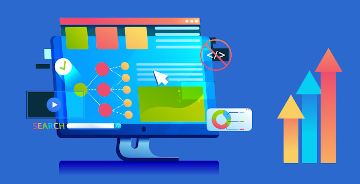"Time" and "money" - these two words explain why an alternative in the form of low-code platforms has appeared next to the classic software produced by software houses.
Due to the dynamic digitization in recent years, the demand for software development has increased to such an extent that there has been a shortage of highly qualified programmers on the market. Such reality forces a fight for the best, and consequently programming becomes more and more expensive and unattainable for many entrepreneurs. At the same time, the dynamics of the market does not allow for delays in implementing business solutions, because they may be out of date in a moment.
What are low-code platforms?
The low-code platform allows you to build ready-made business applications without the participation of highly qualified programmers, i.e. without advanced coding. It is a great alternative for those who cannot afford high-volume projects.
Simple elements and a clear graphical interface enable the creation of final applications on the principle of "building blocks" by less advanced programmers - quickly, efficiently and cheaply. An example is Microsoft Power Apps or Microsoft Power Automate.
However, it should be emphasized that they have quite large limitations. The software house will be made of virtually any software, adapted to any business model or industry, which is not possible in the case of a low-code platform. Only a few low-code platforms allow you to add your own code.
This solution is already available on the Polish market, including in Timberland stores. It's about mirrors, which are actually cameras, connected to augmented reality systems. They allow you to record yourself in 360 degrees, compare creations, wander clothes without physically putting them on and of course, allow various types of additional fun, such as adding / taking weight / height or changing hair color. The mirror can also display other recommended products or material details.
It is difficult to clearly assess whether low-code platforms can replace the typical software development process in the future. They are certainly an interesting alternative to less complex projects.

